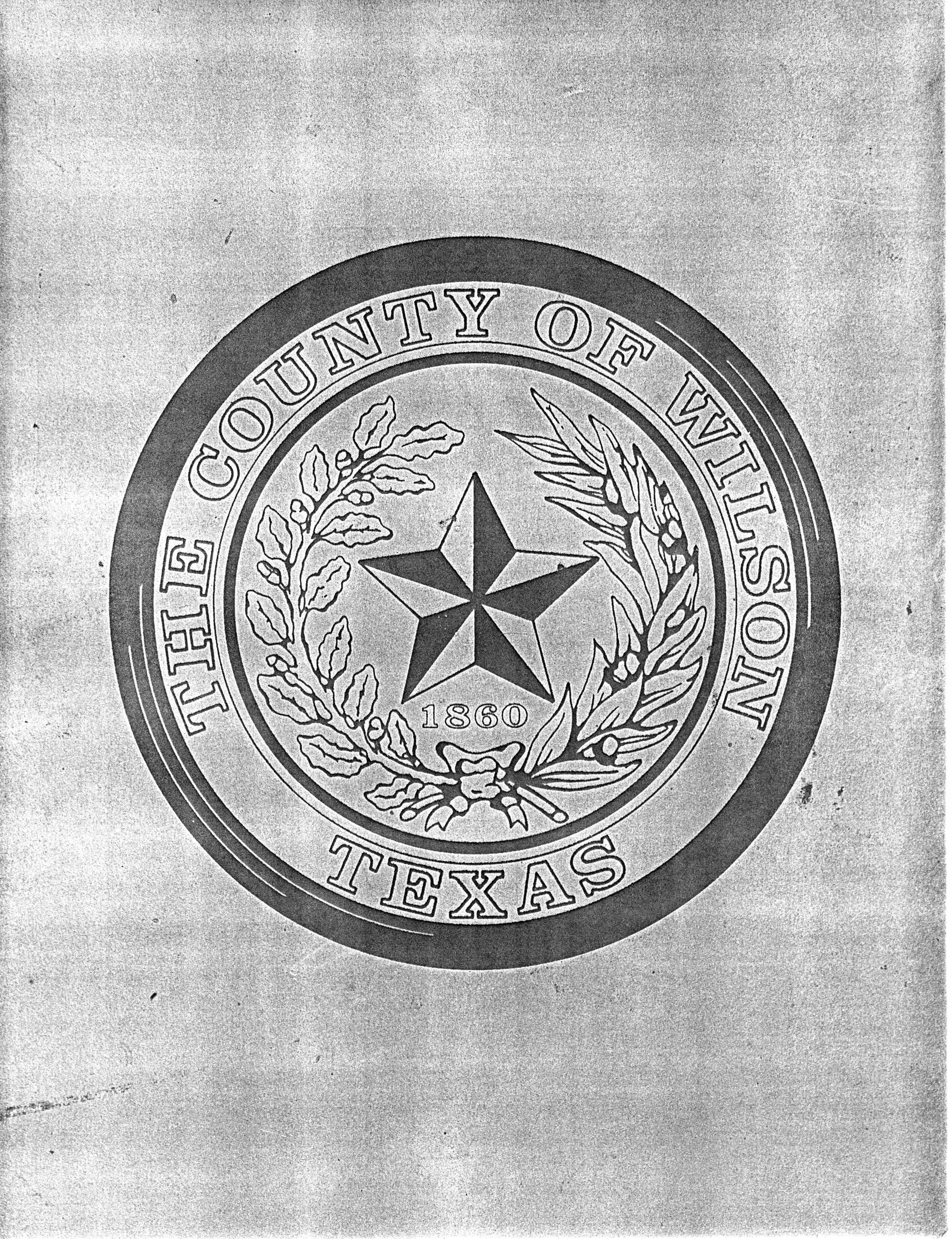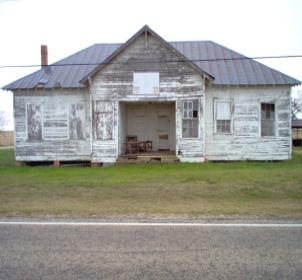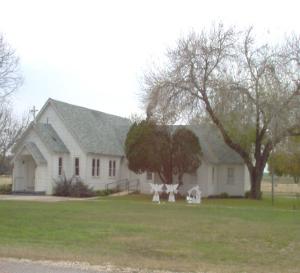Click here
Cemetery: The need for burial ground soon arose, and Mr. Wilhelm Peters met the demand and donated one acre of land for the purpose of a cemetery. The land was the southwest corner acre of his farm, which was two miles east of the school house. Formally known as Mesquite Prarie Cemetery, it was founded in 1904 by the German formers who had recently moved to the area from Fayette and Lavaca Counties in search of more land for their large families. The first buried was that of Baby Hugo Steenken in 1906. He was one year old and the son of Carl Steenken. The first trustees were Charles Boysen, Jake Maerz, and Carl Steenken. Florentino Quintanilla met with them representing the Hispanic community, who had purchased burial sites in the northern section. This is due to segregation being so prevalent during that time the section that had been purchased was behind the Caucasians in a separate cemetery. Jake Maerz, Charles Boysen, and Carl Steenken paid Mr. Peters twenty dollars for the acre as witnessed by the delayed deed recorded in 1909. Maerz and Steenken each served the association for over forty years. Arnold Lambeck and Erica Wehmeyer were active officers for the next generation spanning over thirty years. In 1983, Arvid Gus, and Wehland Steenken and their sister Ora Mae Fergusion offered a plan for perpetual care, including the matching of funds subscribed by the membership at large. A perpetual care charter was obtained in 1983. The Steenken family made subsequent gifts including the irrigation system, the oak trees, and the plaques. H.R. Dettman has become Forest Master emeritus. (In 1987 to 1988 the board members were as followed Wehland Steenken, H.R. Dettman, Elaine West, Helmuth Stahl, and Gus Steenken.) When Helmuth Stahl and Gus Steenken passed on they were position was replaced by John Stahl and John Wehmeyer. The Fund Trustees were Barbara Johnson, Betty Harborth, and Kent Steenken. The Denhawken Community also dedicated ten oak trees to the memory of: Zilmon Linnstaedor, Leroy Linnstaedor, and Louis Urrabazo. These men gave their lives during World War II in the service of our country
Prospects: Many who live in the area are still as close as in the old days. Every one knows each other and their always willing to help out. When asking where the town is going some say it will soon be gone. Others say it has already disappeared. All that remains of the past is the church, cemetery, school, and one blacksmith shop. Anyone not familiar with the past says they know Denhawken by the intersection on Highway 119. Many travel the highway daily as a rout to the coast and all the towns along the way. The town is slowly merging in with the surrounding town of Stockdale. The more people move to Stockdale the more Denhawken becomes part of the past. Today if you stop by you will see some of the same warm goodwill and fellowship that still remains among the closely knit residents of Denhawken.
Links: Denhawken, Texas
About Wilson County
San Antonio and Gulf Railroad
About Gonzales County
Stockdale Independent School District
Dr. Beck of the Lutheran Church
Wilson County Almanac of 1860. pages. 13 and 21. We found a lot of information about the founders and how the town started to grow.
Handbook of Texas Online. We found information on where the town is located and the population years ago.
A news excerpt. "Cotton is Queen in Denhawken" By: Bernice Brelsford. This helped us a lot on the economy and how cotton played a huge role in it.
Two diffrent Cemetery plaques. These were located in front of the cemetery. They helped us on the origins of the cemetery.
Interview with Mary LasKowski. She told us a lot on the general store and the school.
Talking to Patsy Stahl. She gave us some general information on the history of the town and the pictures.
www.wilsoncountynews.com. This web site has information about the county Denhawken is located in.
www.tsha.utexas.edu/handbook/online/articles/SS/eqsdp.html. This has information on the San Antoino and Gulf Railroad.
www.gonzales.tx.us. This site has information on Gonzales county.
www.stockdale.k12.tx.us. This site is about the Stockdale Independent School.
www.tlu.edu. This site was about Dr. Beck one of the pastors of the Lutheran Church in Denhawken.
Three land tilte books from Mrs. Steele and talking to her.
Return to Small Town Research Projects Index



